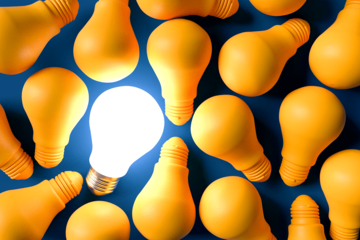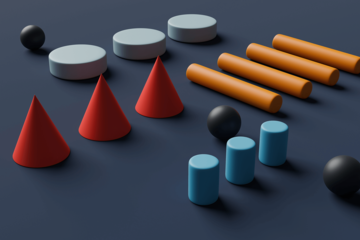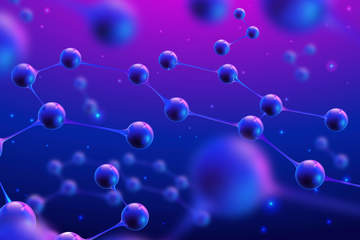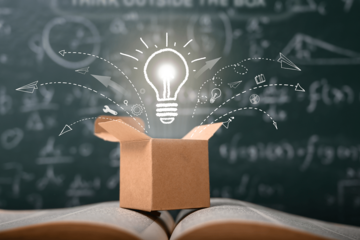Feed
-
CypressDeep learning is one of the major subfield of machine learning framework. Machine learning is the study of design of algorithms, inspired from the model of human brain. Deep learning is becoming more popular in data science fields like robotics, artificial intelligence(AI), audio & video recognition and image recognition. Artificial neural network is the core of deep learning methodologies. Deep learning is supported by various libraries such as Theano, TensorFlow, Caffe, Mxnet etc., Keras is one of the most powerful and easy to use python library, which is built on top of popular deep learning libraries like TensorFlow, Theano, etc., for creating deep learning models. Overview of Keras Keras runs on top of open source machine libraries like TensorFlow, Theano or Cognitive Toolkit (CNTK). Theano is a python library used for fast numerical computation tasks. TensorFlow is the most famous symbolic math library used for creating neural networks and deep learning models. TensorFlow is very flexible and the primary benefit is distributed computing. CNTK is deep learning framework developed by Microsoft. It uses libraries such as Python, C#, C++ or standalone machine learning toolkits. Theano and TensorFlow are very powerful libraries but difficult to understand for creating neural networks. Keras is based on minimal structure that provides a clean and easy way to create deep learning models based on TensorFlow or Theano. Keras is designed to quickly define deep learning models. Well, Keras is an optimal choice for deep learning applications. Features Keras leverages various optimization techniques to make high level neural network API easier and more performant. It supports the following features − Consistent, simple and extensible API. Minimal structure - easy to achieve the result without any frills. It supports multiple platforms and backends. It is user friendly framework which runs on both CPU and GPU. Highly scalability of computation. Benefits Keras is highly powerful and dynamic framework and comes up with the following advantages − Larger community support. Easy to test. Keras neural networks are written in Python which makes things simpler. Keras supports both convolution and recurrent networks. Deep learning models are discrete components, so that, you can combine into many ways.By: Edwin CastelThursday, Jun 30, 2022HEALTH AND NUTRITION+1

-
Global Leadership SummitGlobal Leadership SummitBy: Anne miller New vijayalaxmi santosh mhetre maliThursday, Jun 30, 2022CULTURE AND SOCIETY+1

-
Cypresshttps://youtu.be/yM38NmF-LC4 NTT DoCoMo's i-mode is a mobile internet service popular in Japan. i-Mode was invented by a team led by Mari Matsunaga in February 1999 at NTT DoCoMo. This tutorial explains the basic concepts and applications of i-Mode.By: Edwin CastelWednesday, May 4, 2022EDUCATION
-
Virtual Conference: Religion and Democracy on the African ContinentVirtual Conference: Religion and Democracy on the African Continent: Colonial Legacies and Postcolonial Possibilities “A broad rethinking of political issues becomes possible when Western ideals and practices are examined from the vantage point of Africa.”—Pankaj Mishra, New York Review of Books Join us Saturday, May 7–Sunday, May 8, for a virtual conference, featuring scholars of Africana Studies, Religious Studies, Anthropology, History, Sociology, Law, and Politics, who will share their expertise on religion and democracy on the African continent. The event will feature a keynote address by Mahmood Mamdani, the Herbert Lehman Professor of Government at Columbia University and author of the book, Neither Settler Nor Native: The Making and Unmaking of Permanent Minorities, (Harvard University Press, 2020). The conference presentations will result in the publication of an edited volume to be made freely available next year. Registration The conference will be hosted on Zoom; attendees must register separately for each session. Click on the linked session titles below to register and to learn more about the sessions and speakers. All sessions will be recorded and made available on the Religion, Race & Democracy Lab’s Vimeo channel. Schedule of Events Saturday, May 7: Looking Back 9–11 AM EST Historical Formations of Religion and Democracy 11:30 AM–1:30 PM EST African Religious Movements & Democracies 2–4 PM EST Keynote Lecture: Mahmood Mamdani, Neither Settler Nor Native: The Making and Unmaking of Permanent Minorities Sunday, May 8: Looking Forward 10 am–12 PM EST Contemporary Conflicts, the State, and Religion in Africa 1–4 pm EST New Theories and the Future of Religion and Democracy in Africa (followed by Closing Remarks) Co-sponsored by the University of Virginia Democracy Initiative's Religion, Race & Democracy Lab, the Page-Barbour Funds, the Institute of the Humanities & Global Culture, the Carter G. Woodson Institute, and the Virginia Center for the Study of Religion.By: Edwin CastelTuesday, May 3, 2022CULTURE AND SOCIETY+1
No Preview Available -
Response AssertionResponse Assertion Lets see how to add an assertion, go to your Thread Group, in my case it is Users. Right click your Thread Group,go to Assertions and click on Response Assertions. You can apply an assertion to the Main sample and sub samples, Main sample only,Sub-samples only or apply to Jmeter variable. The next field in the Response Assertion window is the Field to Test. In my case I have clicked Response Code as the field to test my response. Also you can test Text Response, Document (text),URL sampled and so on. I want to check whether the response code is Equals 200, so for that we can write the code in the Patterns to Test text box. This assertion will check the response code and compare with 200, if this matches it will pass the test case or if not it fail.By: Vijaya MhetreFriday, Feb 4, 2022EDUCATION

-
U.S. Embassy Bamako Public Diplomacy Annual Program StatementIntroduction PAS Bamako invites proposals for projects that strengthen ties between the United States and Mali by promoting bilateral cooperation and highlighting shared values and shared interests. All programs must advance one of the key priorities listed below and must promote an element of American culture or have a connection with American expert/s, organization/s, or institution/s in a specific field that will promote increased ties between the United States and Mali and foster understanding of U.S. policies and perspectives. The PAS Small Grants program is NOT a vehicle to fund development projects, nor can these grants be used to support for-profit entities. Examples of PAS Small Grants Program projects include, but are not limited to: Artistic and cultural workshops, joint performances, and exhibitions Academic and professional lectures, seminars, and speaker programs Cultural heritage conservation and preservation programs Civic engagement and social activism programs Key Priority Areas and Audiences The purpose of projects funded under the annual program statement is to strengthen ties between Americans and Malians as we work together to make progress toward the goals outlined below. Strengthening independent media and fighting disinformation through media literacy, training and other engagement; Reinforcing existing Sister City relationships or other relationships between U.S. and Malian institutions (e.g. universities or museums) Ensuring participation of citizens, especially women and youth, in the democratic process; Fostering economic growth and entrepreneurship;By: Anne miller New vijayalaxmi santosh mhetre maliFriday, Dec 24, 2021YOUTH EMPOWERMENT+2

-
Life Course Model for Treatment of ADHDWe previously proposed a model for treatment of ADHD that emphasizes a life-course perspective to address the long-term implications and outcomes of early life experiences on health, psychological, and educational outcomes of individuals with ADHD across the life span (Evans, Owens, Mautone, DuPaul, & Power, 2014). In contrast to prevailing models of care that focus on service delivery to individuals emphasizing short-term symptom reduction, the life-course model prioritizes helping youth with ADHD improve competencies and develop into independent, healthy adults who achieve occupational, personal, and recreational success. Briefly, this model is comprised of four layers of services including (1) foundational strategies to establish appropriate structure and supports in home and school (e.g., parent-teacher communication), (2) psychosocial interventions to increase competencies and address impairments in academic, behavioral, and social functioning (e.g., organization interventions), (3) medication treatment, and (4) accommodations to adapt environments to children’s limitations (i.e., reductions in expectations). These layers represent the sequence within which services should be delivered and combined over time and across systems and settings.By: rupaliTuesday, Nov 16, 2021YOUTH EMPOWERMENT+1


Leave a comment